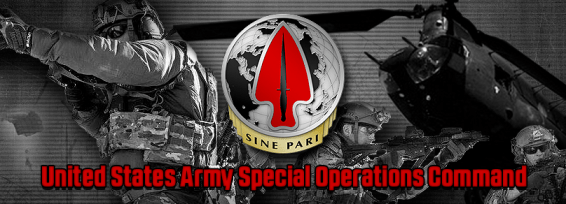
Whats Wrong with ARSOF? Army Special Operations Forces or ARSOF has – according to one special operations officer (writing under a fictional name) – been marginalized by other SOF elements (SEALs and JSOC) and has lost its way.
The author, in “Whats Wrong With ARSOF”, examines the current state of affairs for Special Forces, Civil Affairs, and Psychological Operations. These entities fall under the proponency of the U.S. Army Special Operations Command (USASOC). Other units also come under the command of USASOC – the 75th Ranger Regiment, 528th Sustainment Brigade, and the Special Operations Aviation Regiment (SOAR); but the author is directing his attention to SF, CA, and PSYOP.
He first states that “SF is king” and runs USASOC and the schoolhouse. According to the author CA and PSYOP are second class citizens and looked down upon by SF officers and NCOs. He cites recent attempts by SF to ‘off ramp’ CA to the conventional army.
Another of his points is the lack of strategic thinking on the part of SF officers. According to the author SF officers are tactically oriented and more Army than SF. (Hmmmm). This aspect of professional education, experience, and training limits the promotion potential for senior SF officers to command USSOCOM.
He makes some assertions about the formation of the 1st Special Forces Command and questions its usefulness. He brings up points about manning and resources and the effect of the command on improving promotion and command prospects of SF officers. In addition, the school house – or United States Army John F. Kennedy Special Warfare Center and School (USAJFKSWCS) does not escape his attention. Criticisms of “. . . entrenched civilians and terminal colonels awaiting retirement . . .” can be found in the article.
This is certainly an interesting read for those in the special operations community. It is the second in a series of four articles about U.S. special operations forces. The first “What’s Wrong With SOCOM?” was published on December 25, 2016.
So give “What’s Wrong With ARSOF?” a read. While I don’t agree with many of the author’s points he certainly comes out with some good conversation starters for morning PT or the late afternoon staff meeting. Published on December 27, 2016 by Small Wars Journal.